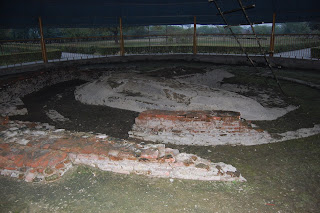A Pilgrimage Special: The Relic Stupa of the Licchavis
Before Patna too, we did visit the Relic stupa of the Licchavis at Basrah. The original mud stupa of the Licchavis is still there surrounded by burnt bricks of a later period.The stupa is not as impressive as so many of the stupa that we had visited earlier. Most of the ones we visited were massive in structure and had been built and improved on by various people over different period of time. Now, after talking about stupa for so long, what exactly is a stupa?A stupa is actually a type of Buddhist mound-like structure found across India and other parts of Asia, and supposedly increasingly in the Western World. In South East Asia, it is known as chedi, in Sri Lanka, dagoba or as tope. The stupa was originally only a simple mound of mud or clay to cover supposed relics of the Buddha. After the passing away of the Buddha, his remains were cremated and the ashes divided and buried under eight stupas with two further stupas encasing the urn and the embers. It was here at the Relic stupa of the Licchavis where archeologists in 1958 found a relic casket of soapstone containing one-fourth full of ashy earth, a piece of gold leaf, two glass beads, a small conch and a copper punch-marked coin. According to Hsuan Tsang, King Asoka had taken nine-tenths of a portion of the ashes of the Buddha and had left one-tenth behind. The relics were to be distributed among the several thousand stupas he had built.
At the Relic Stupa...
 The original mud stupa...
The original mud stupa... The mud stupa surrounded by burnt bricks of a later period...
The mud stupa surrounded by burnt bricks of a later period...
 The original mud stupa...
The original mud stupa...

 The original mud stupa...
The original mud stupa...
